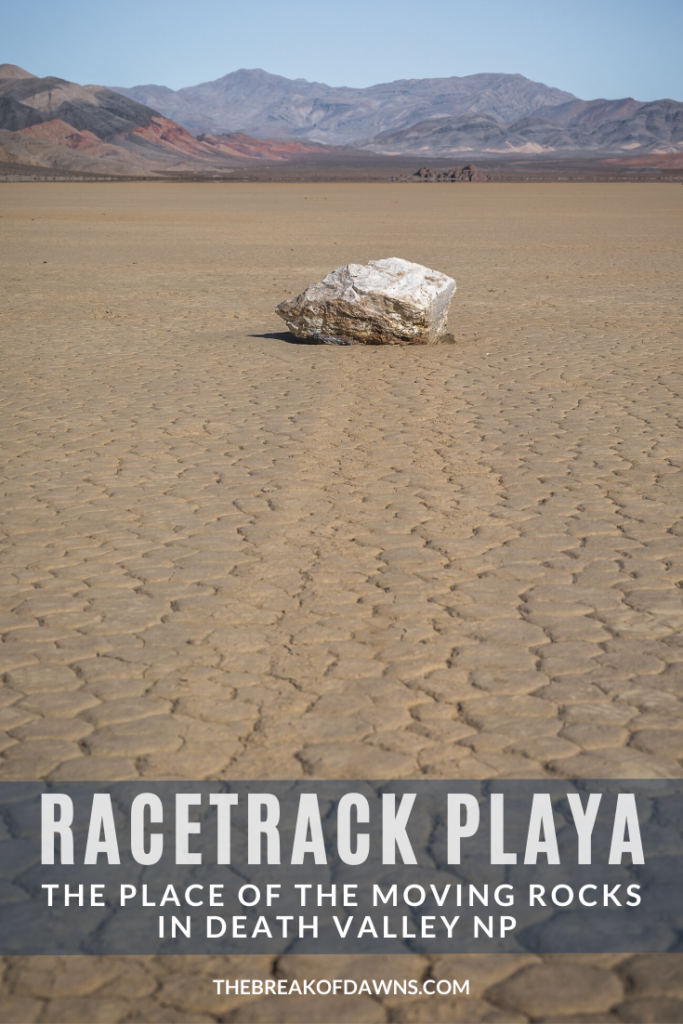
In a remote area of Death Valley National Park is a place with a long-standing mystery surrounding it. At nearly 3 miles long and over a mile wide, the Racetrack Playa in Death Valley is also known as the ‘place of moving rocks.’ On a recent visit to my favorite National Park, I visited the Racetrack Playa to see the sailing rock phenomenon for myself.
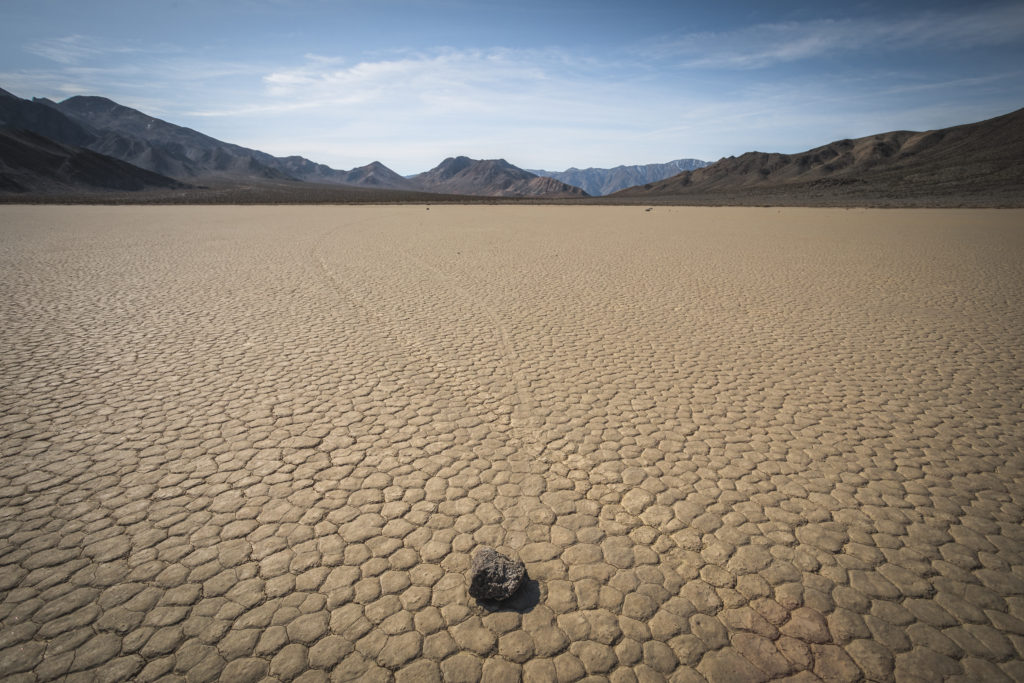
What is the Racetrack Playa?
The Racetrack is a dry lakebed, also known as a playa. When it was created nearly 10,000 years ago, the area experienced hot to cold to wet climate changes. Due to the conditions, the lake eventually evaporated, leaving behind a surface of brown mud over 1000 feet thick.
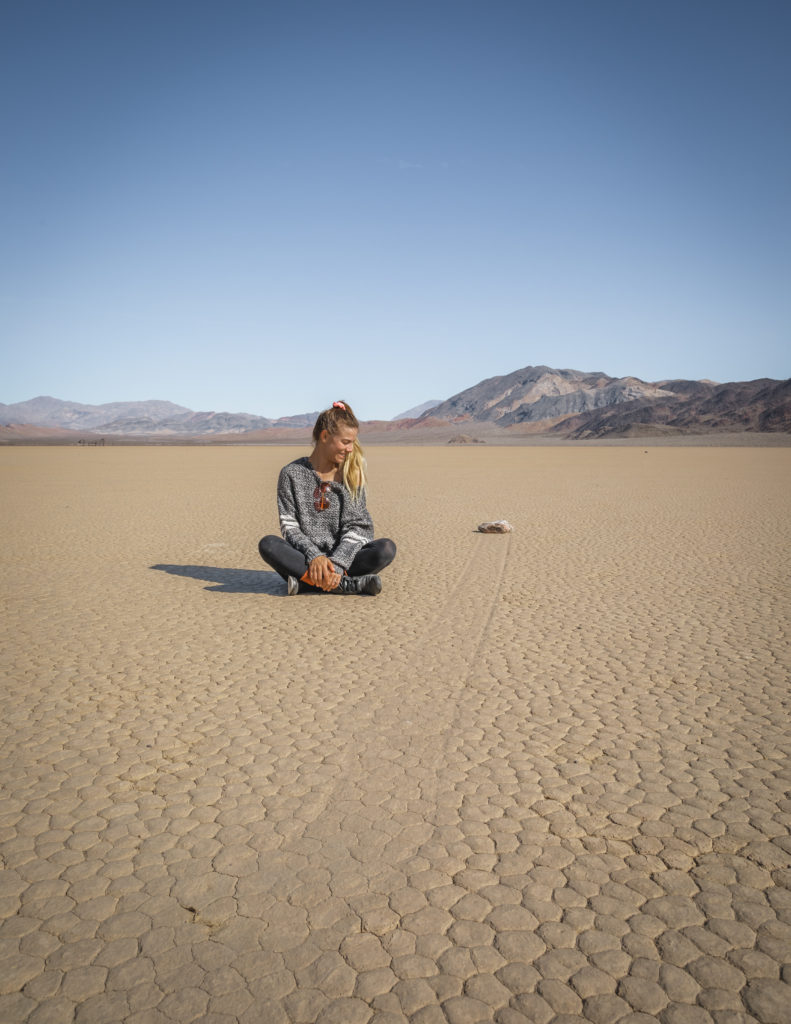
How to Get to the Racetrack Playa
As mentioned, Racetrack Playa is located in a remote area in the northern portion of Death Valley. If traveling from the Furnace Creek area in central Death Valley, take Scotty’s Castle Road north from CA-190 to the Ubehebe Crater. From here, take the unpaved Racetrack Valley Road for 26 whole miles.
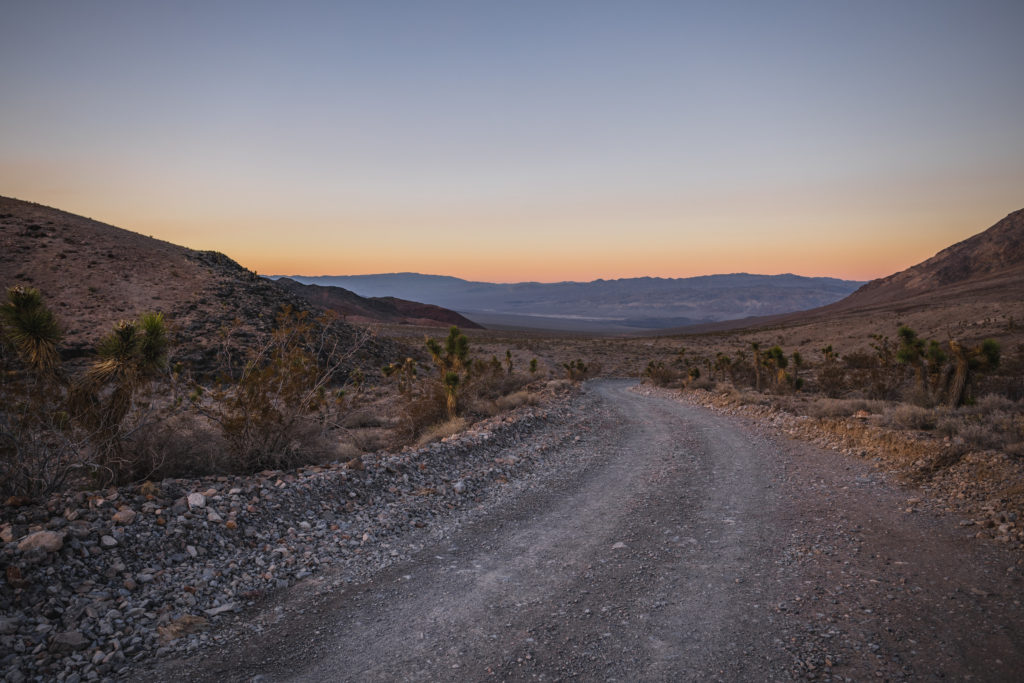
26 miles doesn’t sound like a far distance but it is on a road like this. Large rocks and a rough washboard affects the driving time, taking between 1.5-2 hours to reach the playa itself.
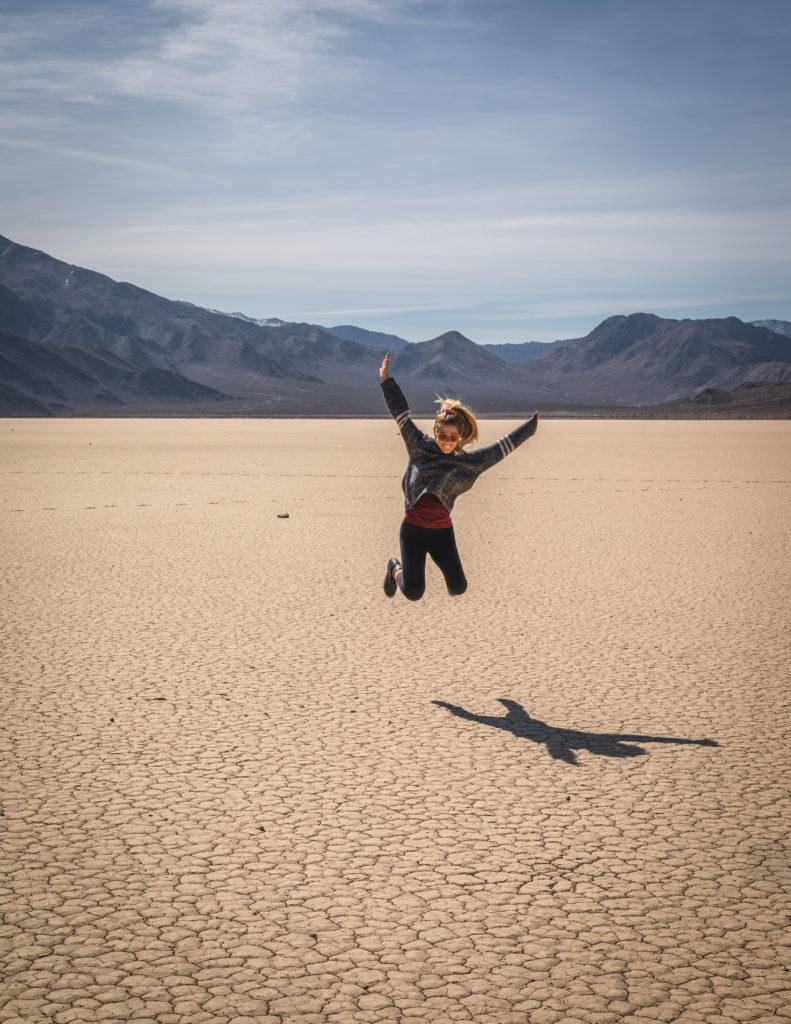
Tips for Visiting the Racetrack Playa
- First and foremost, come prepared for the journey to the Racetrack Playa. The NPS recommends a 4-wheel drive vehicle with well-treaded tires for the drive; having a spare would help too. Rental cars probably won’t make it with the large rocks and washboard.
- If the playa is at all wet during your visit, do not walk on the surface. Footprints left in the mud will remain for years to come as it sees little to no rain and will alter how the rocks move.
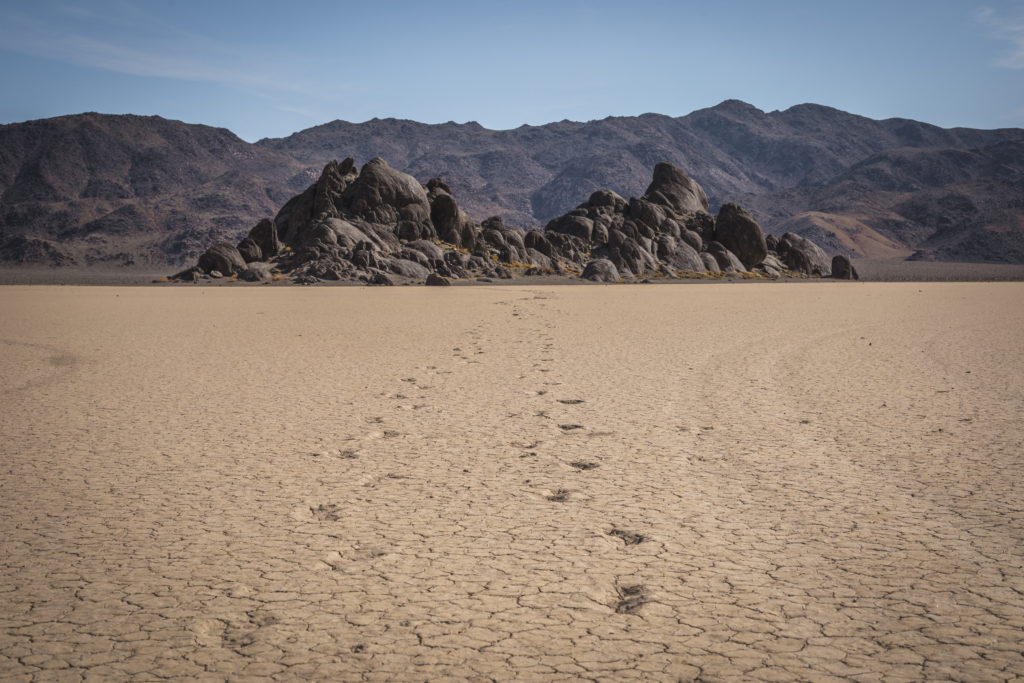
- Stay on designated roads and never drive on the playa. Don’t touch, move or remove the rocks.
- Have a full tank of gas when beginning the journey. Bring along plenty of food & water in case of a breakdown. There’s no cell service in the area so don’t make the trip unless you’re prepared.
Check the NPS website here for any current alerts or conditions for Death Valley
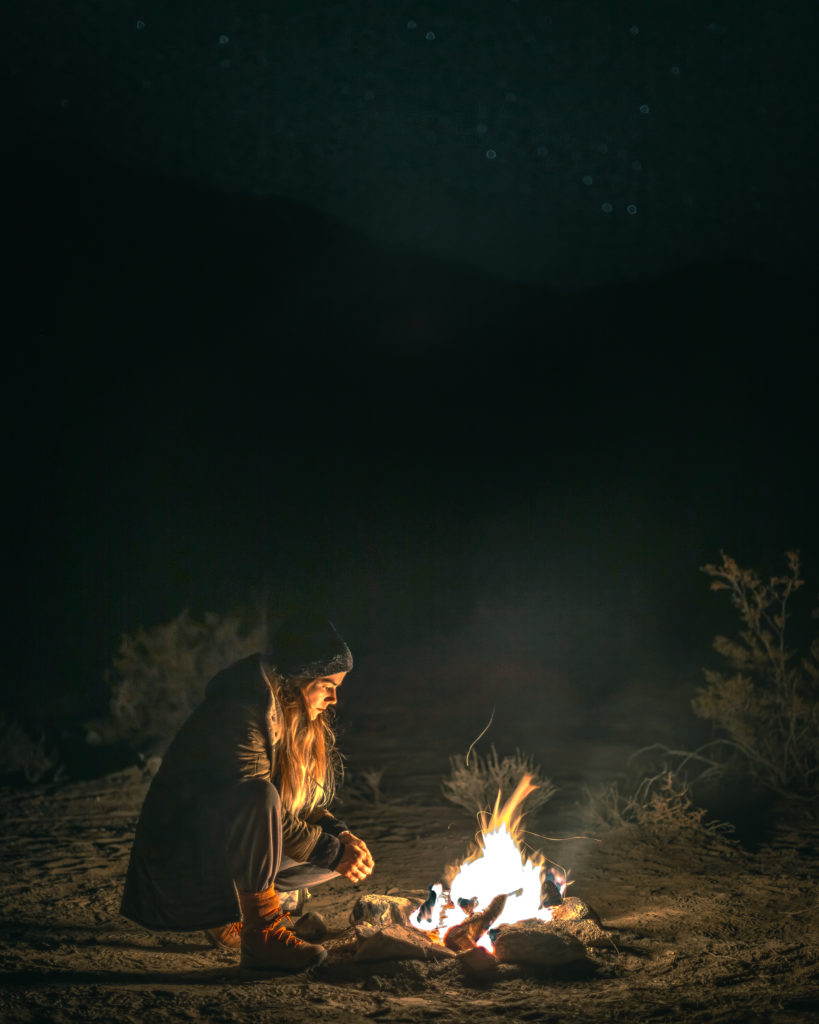
If you want to break the trip up, consider camping out at the Homestead Dry Camp towards the southern end of the Playa. It’s totally free and a great a starting point for exploring Racetrack Playa in the morning on your way out.
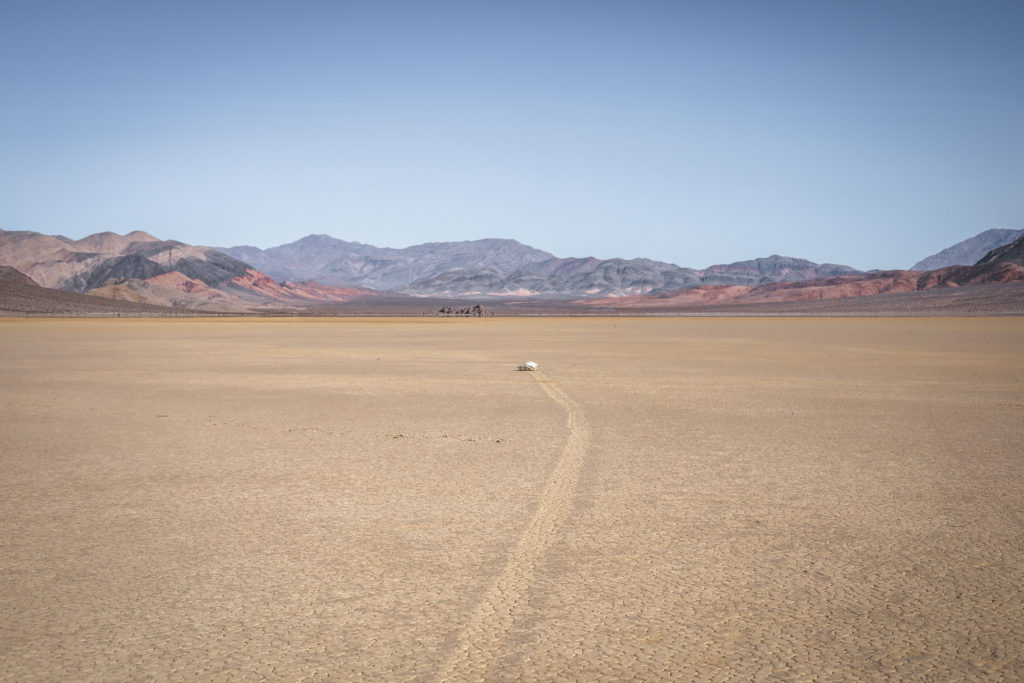
Exploring the Racetrack Playa – The Place of the Moving Rocks
There are essentially two separate areas to the Racetrack Playa, the north and the south. In the north we can find the Grandstand with the southern area being home to the ‘place of the moving rocks.’
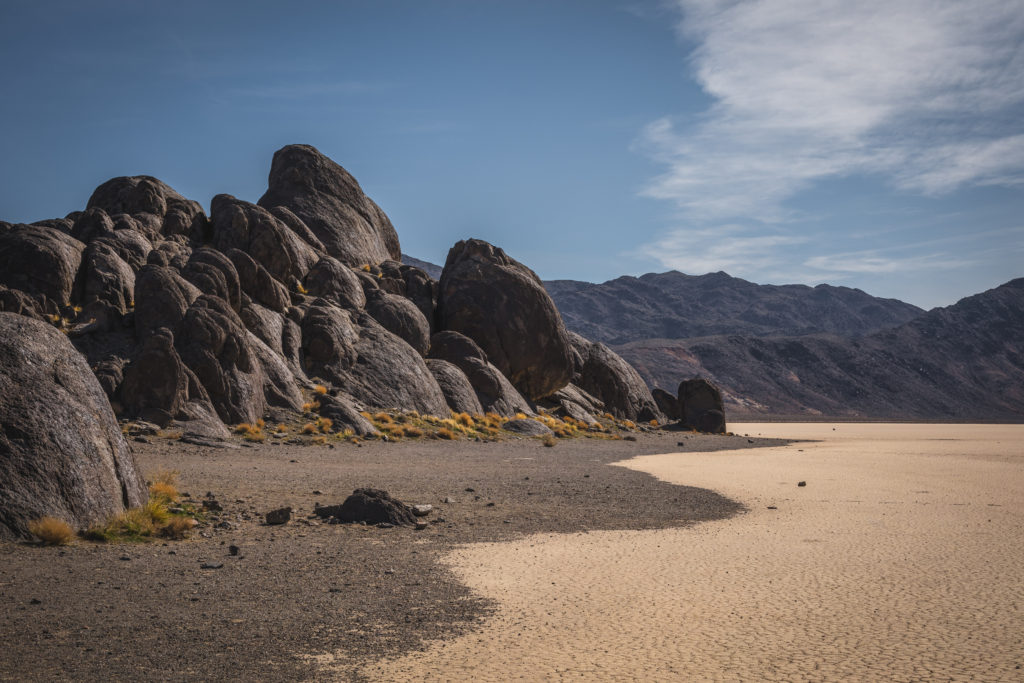
The Grandstand
Almost immediately after passing Teakettle Junction you can see the Racetrack in the distance along with the Grandstand. With a parking area to the right, there are a number of informational markers to learn about the area before walking on to the playa.
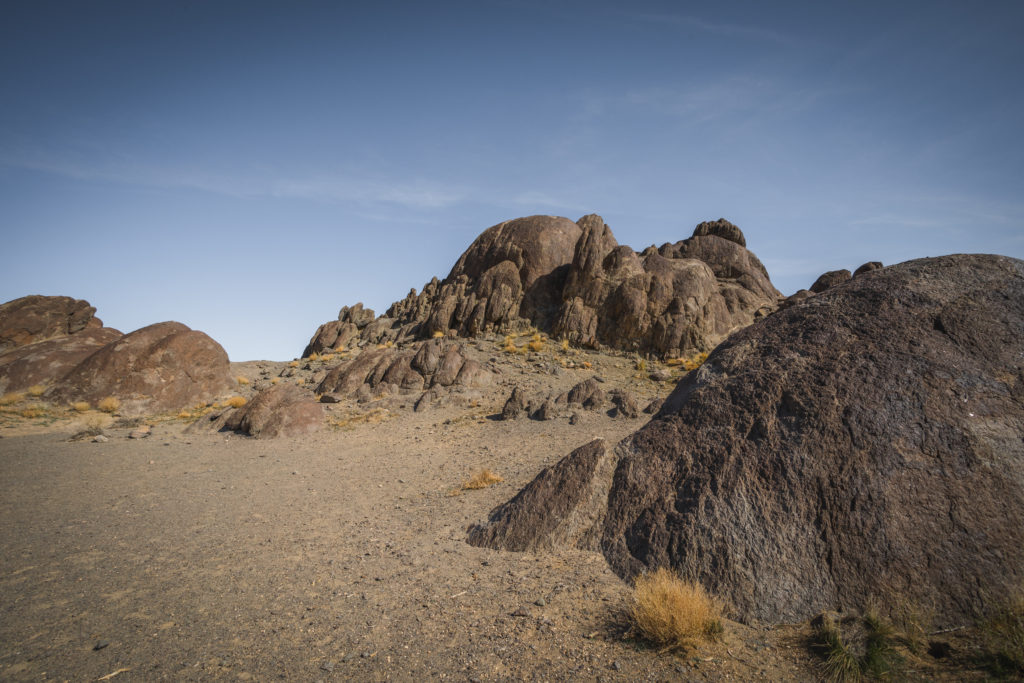
Take some time to walk out and inspect the Grandstand, a massive isle of quartz monzonite. Seemingly out of place for the area, it offers some great views of the surrounding Racetrack Playa.
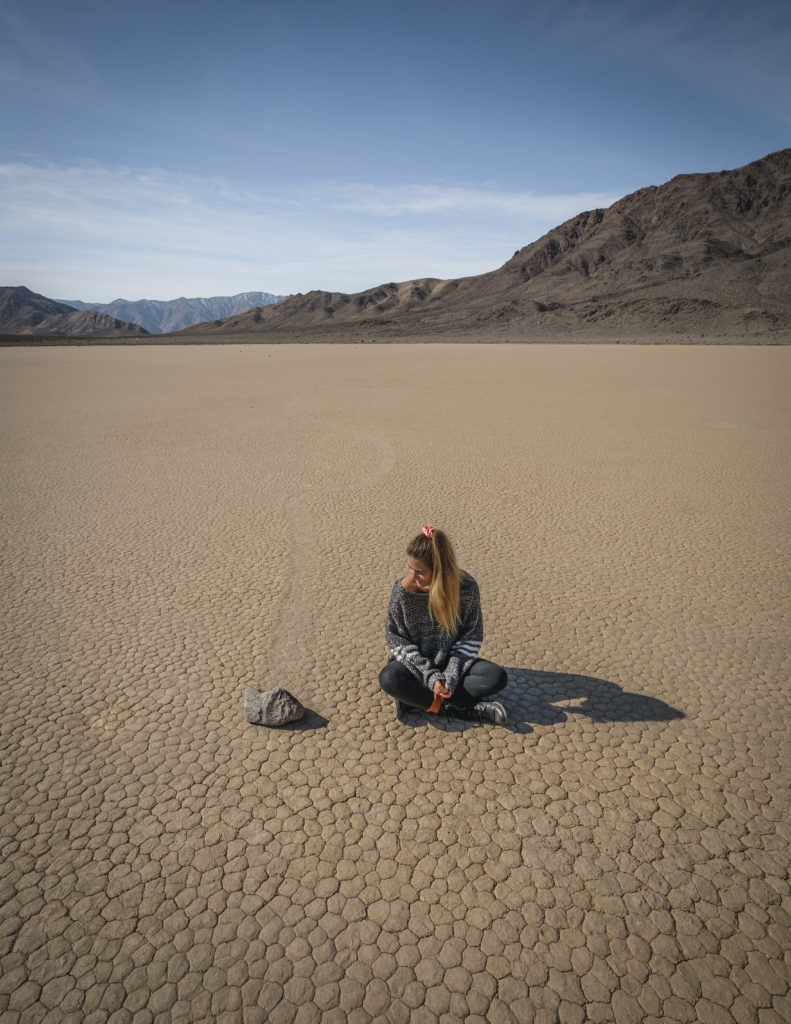
The Place of the Moving Rocks
Racetrack Playa is the place of the moving rocks and the reason behind why most tourists flock to the area. To see the sailing stones, we’ll have to drive a little further south. Upon reaching this area, we can begin to see various rocks on the playa in the distance.
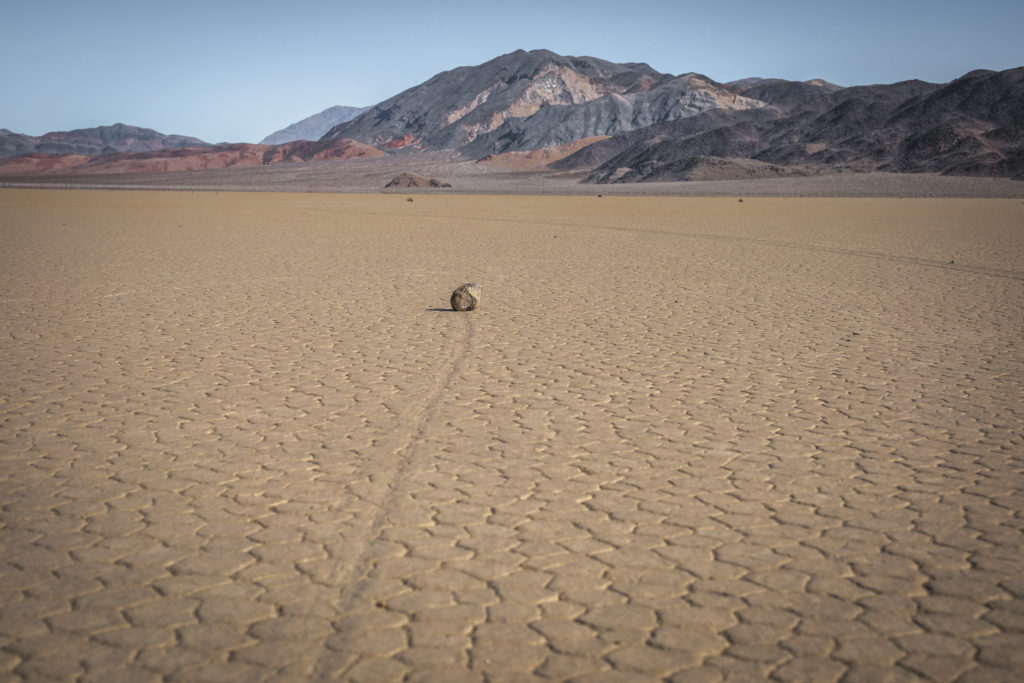
It’s as if the rocks are emulating snails, leaving behind a trail that taints the surface beneath them. Some rocks are large, some small, but each supplying a puzzling image that goes against all common senses.
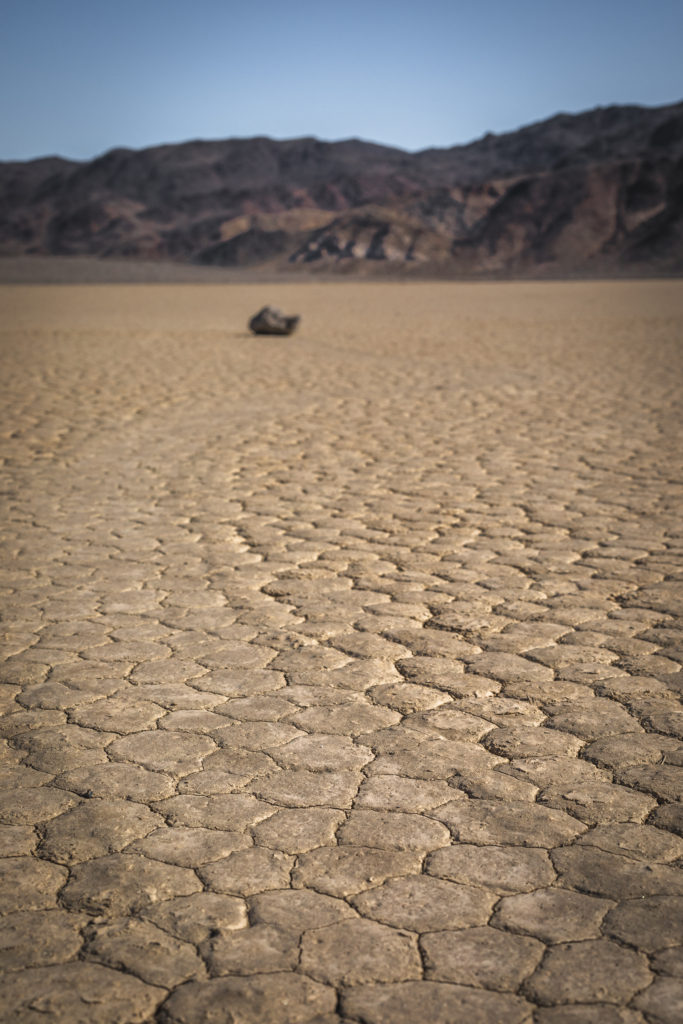
Sailing stones? Well, not always. Researchers have found that the rocks can be immobile for nearly a decade without ever moving an inch. It’s only been 6 years since the mystery behind the Racetrack’s moving rocks was uncovered.
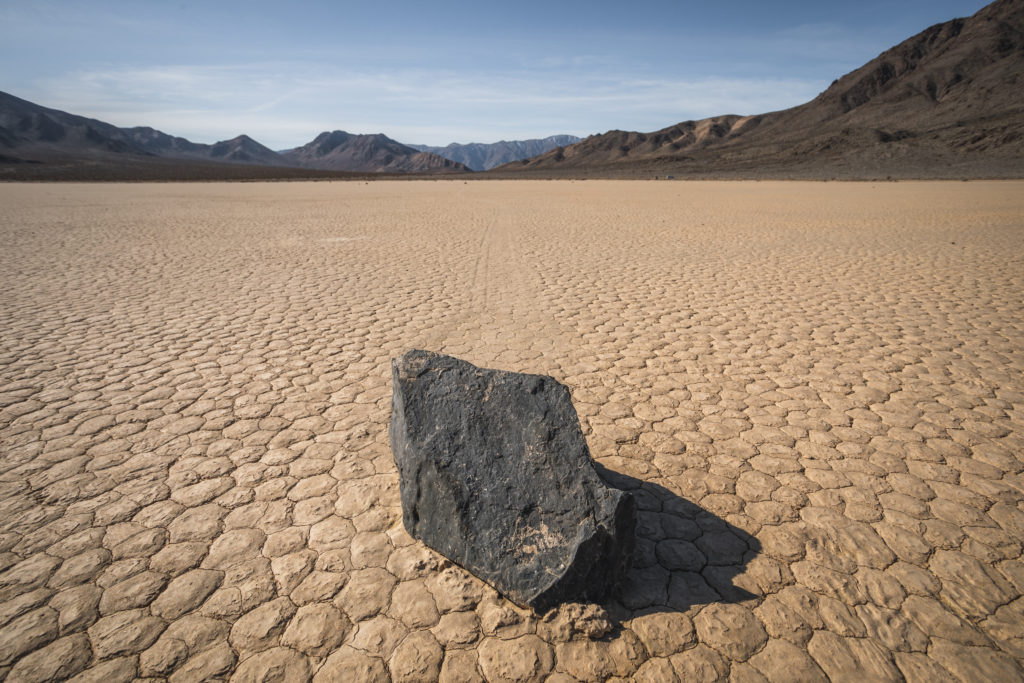
According to the NPS, an experiment conducted in the area found that special circumstances have to occur for the rocks to move. In the winter months, the area experiences more rain and colder nightly temperatures than the rest of the year. Enough rain has to fall in a short period for a pond to form over the playa.
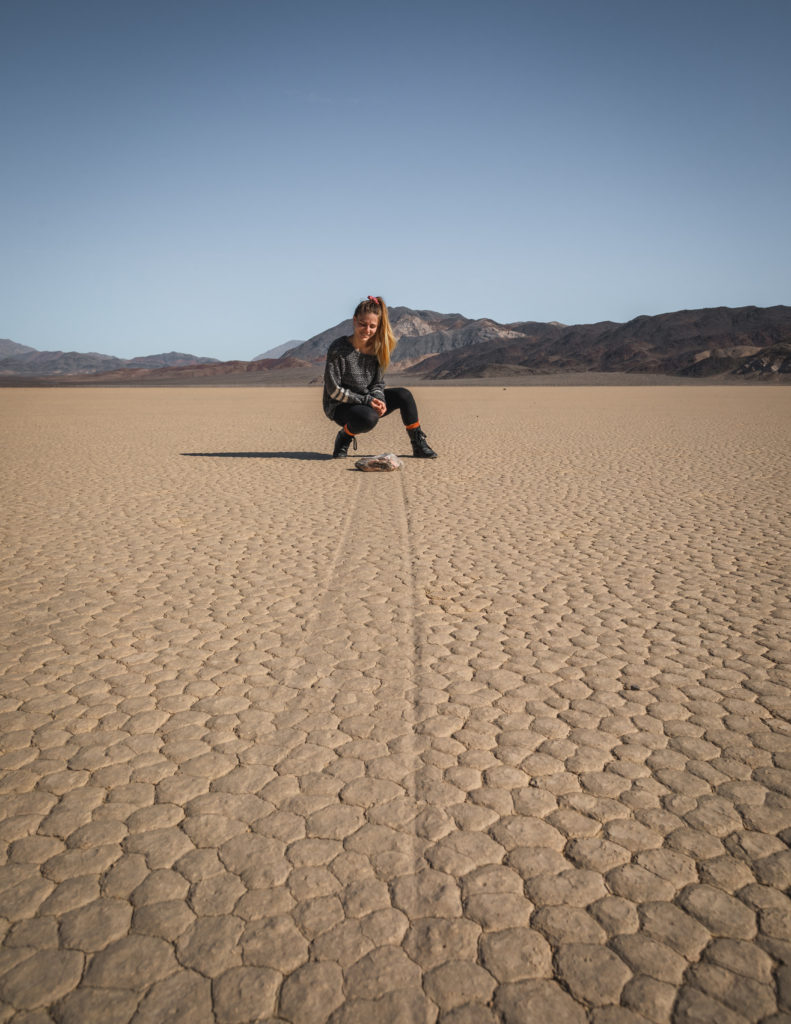
As the temperatures drop at night, the water freezes and creates “windowpane ice.” This means that the ice is thin enough to “move freely” but also thick enough so it has some power behind it. When the sun comes out, it breaks the ice into floating sheets.
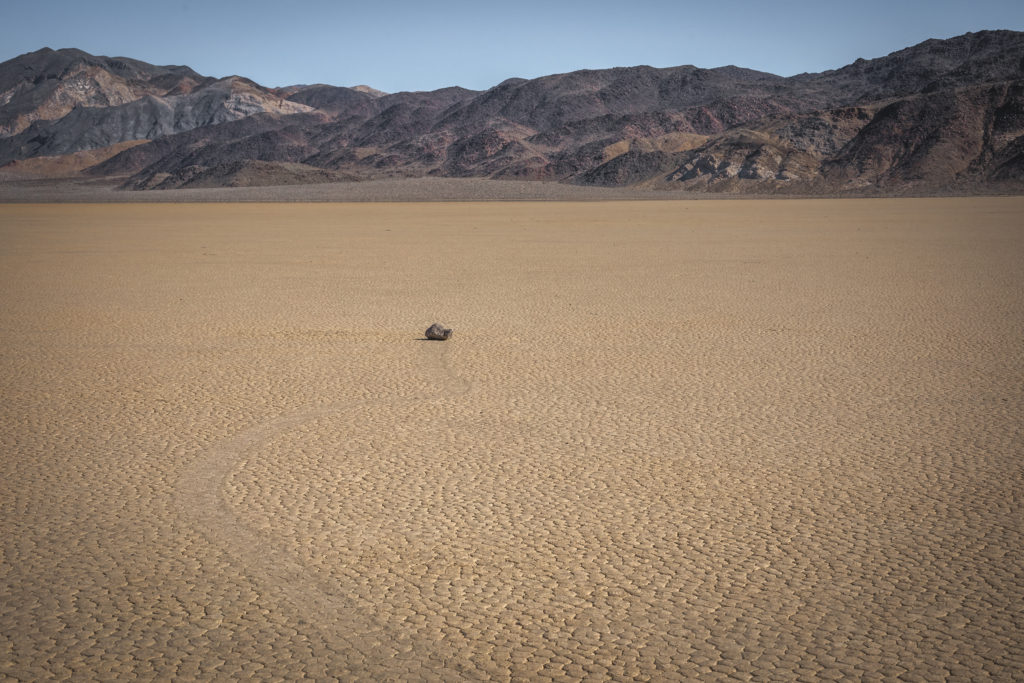
Wind begins to blow around the playa, allowing the ice to move across the pond. With them they push the rocks across the playa, leaving behind a trail, sometimes as long as 1500 feet!
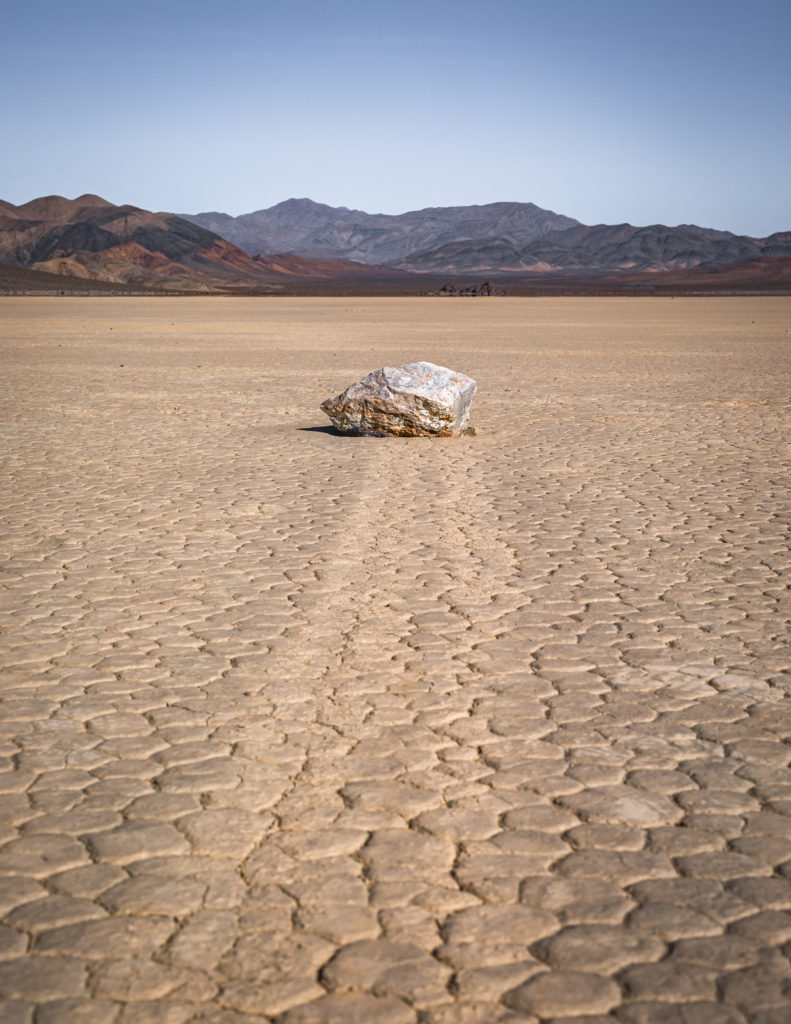
Racetrack Playa is the place of the moving rocks. And if it’s not a sight to see, I don’t know what is.
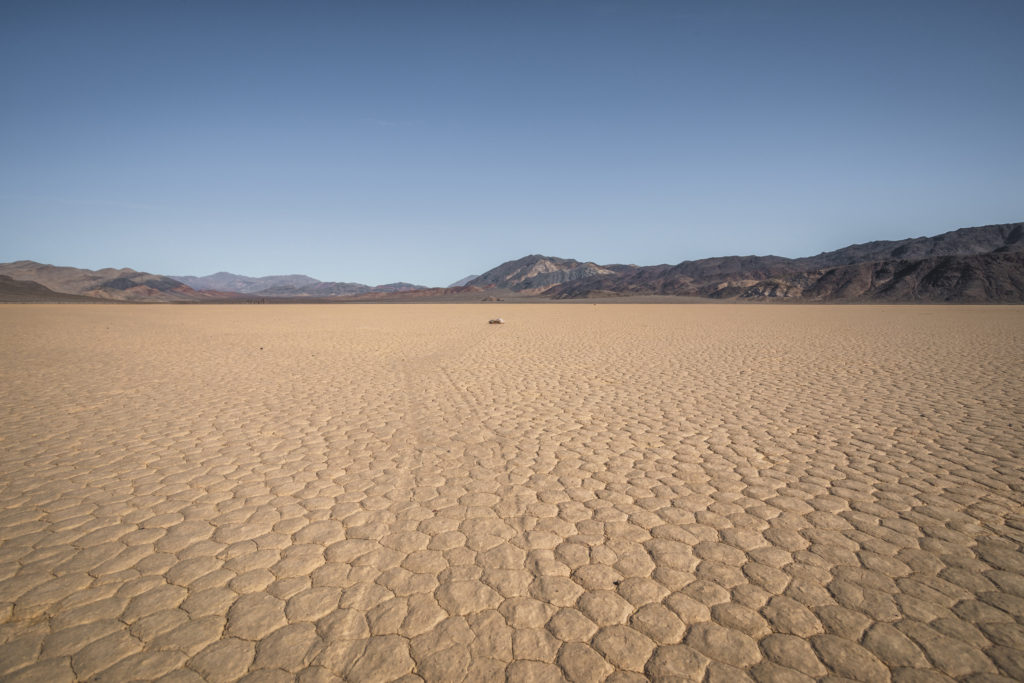
Before heading into natural areas, it’s imperative that you’re familiar with the “Leave No Trace” principles. Read More: Leave No Trace: The 7 Rules of the Backcountry. Learn more about Leave No Trace on their website here.
Read More National Park Posts HereLike This Post? Pin It!
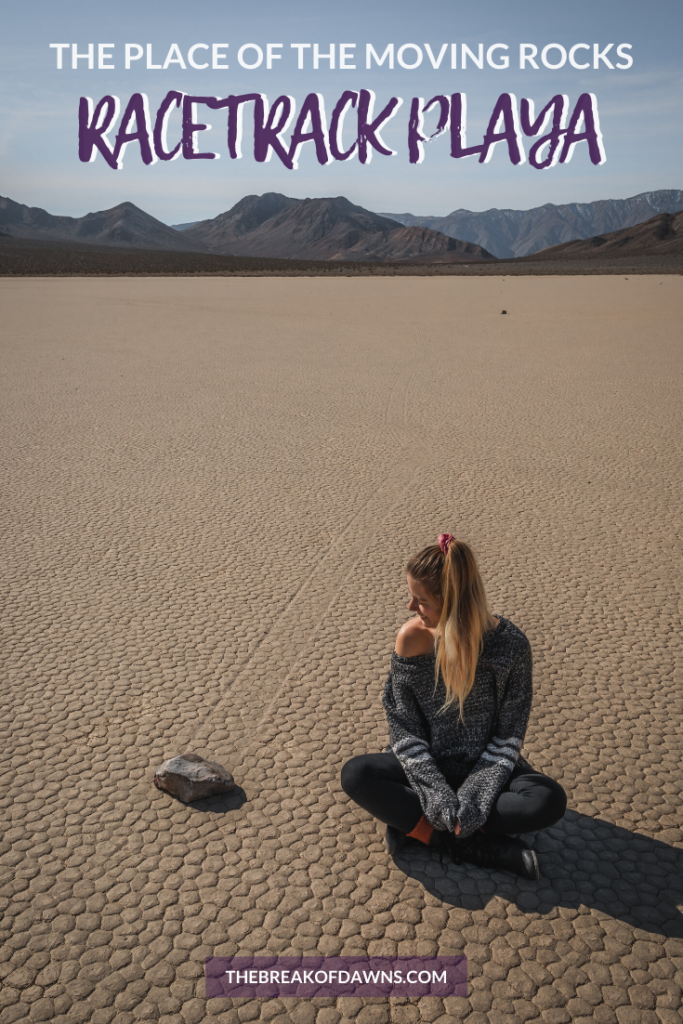
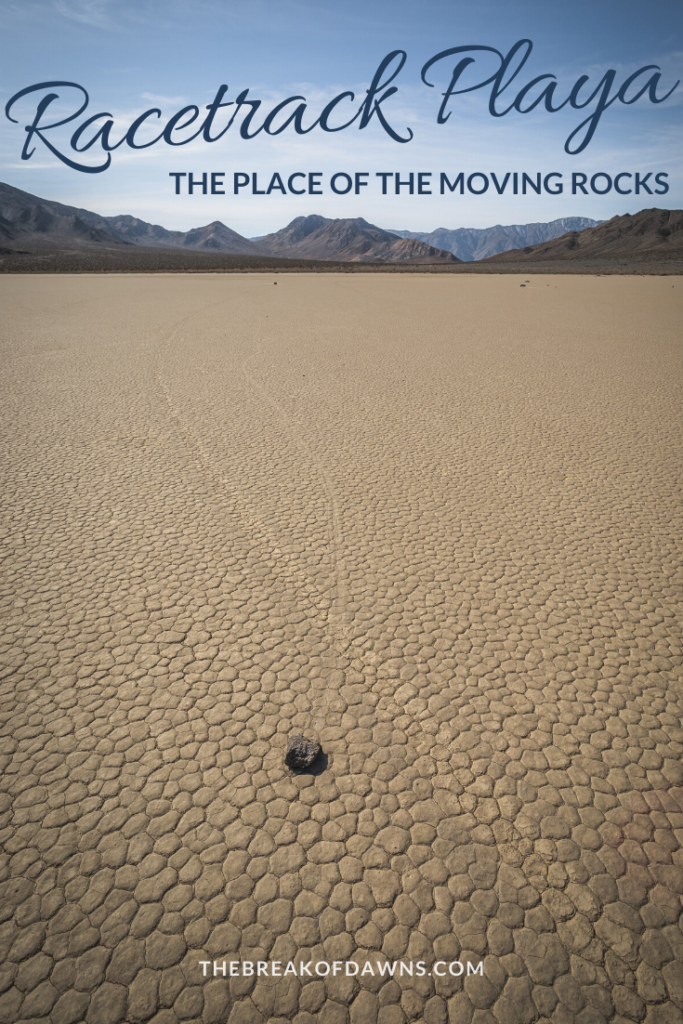
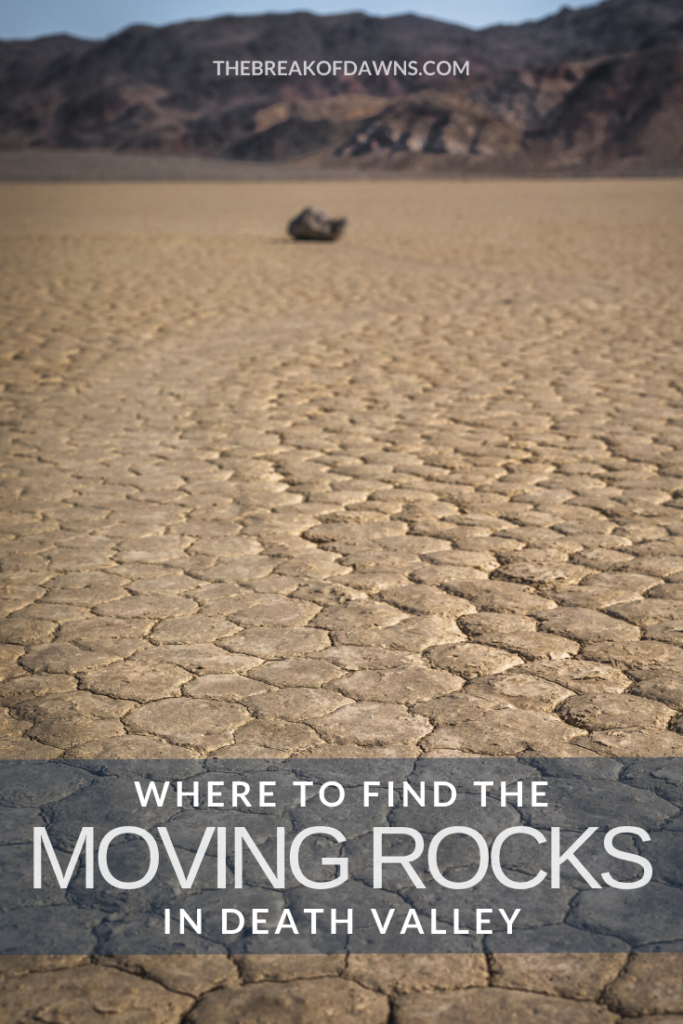

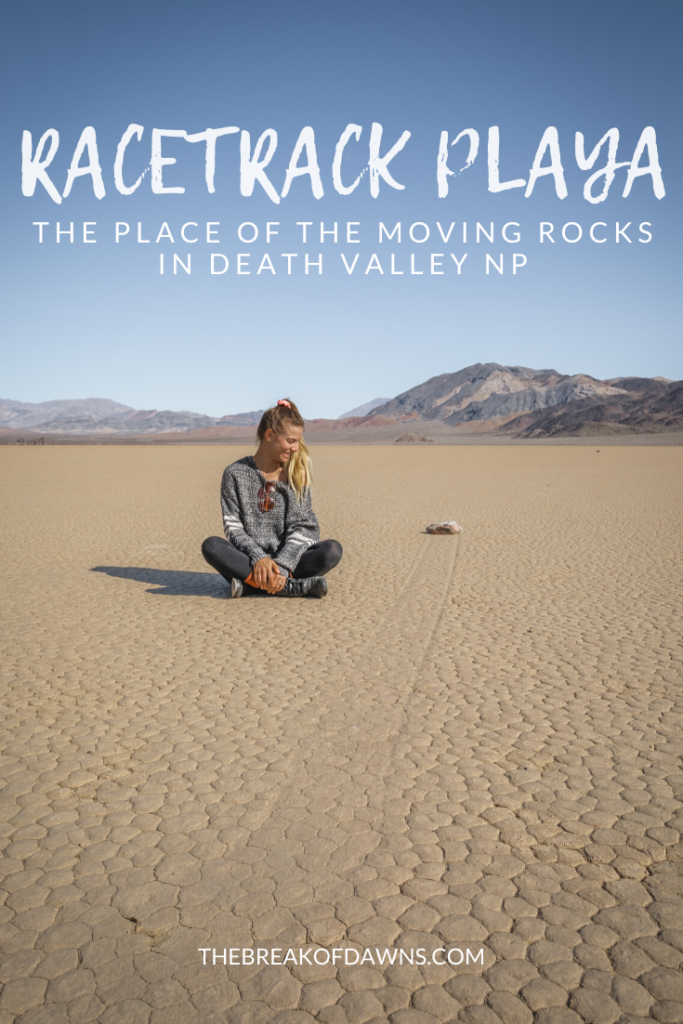
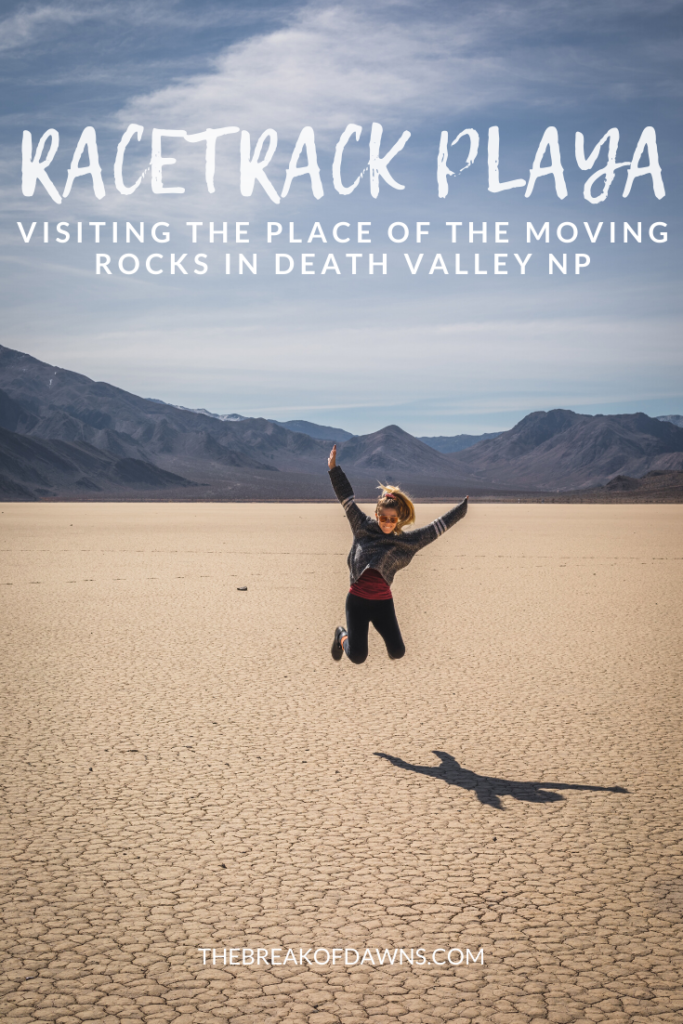
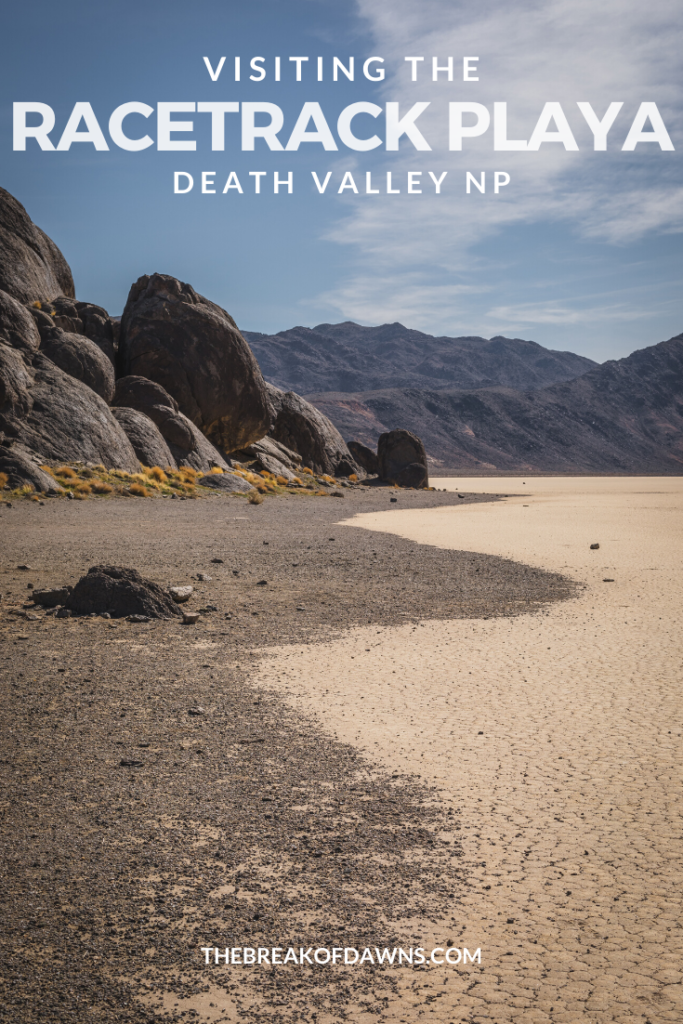
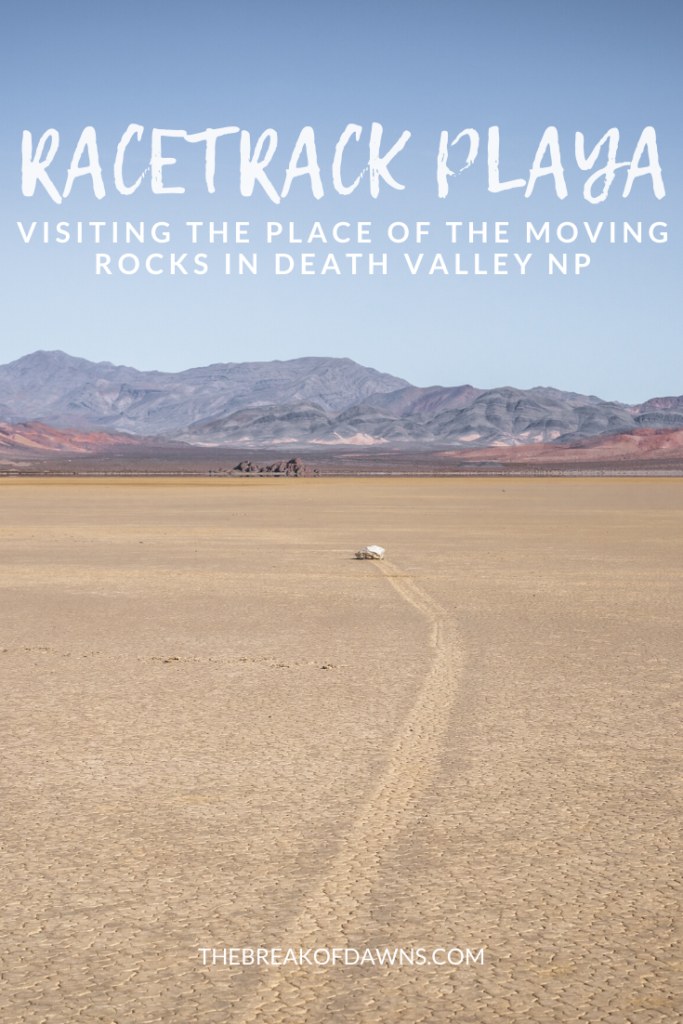
| This post contains affiliate links. At no extra cost to you, if you purchase one of these products I may receive a small commission. This helps me maintain my blog as a free space to you. Check out my Disclaimer for more info.

